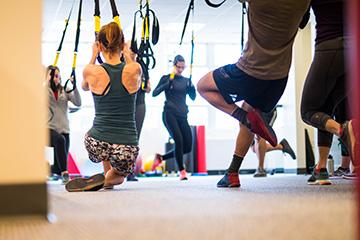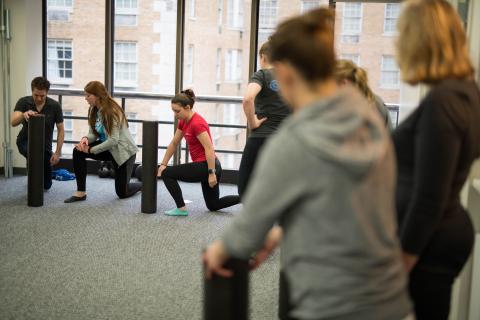When I first started running, I couldn’t get enough of it. I loved getting away from the rest of the world. I loved being outside. And I loved exploring the countless routes and trails Washington, DC and the surrounding areas in Northern Virginia and Maryland have to offer.
Like most people, I had heard about the benefits of incorporating cross training into my fitness plan. As a physical therapist at Rose, I encouraged it for my athletes. Like a lot of new runners, however, I was satisfied with running as my only form of exercise and enjoyed seeing the new gains I made each week.
It wasn’t long though before I found myself hitting a plateau in my running performance and struggling through problematic injuries. Suddenly I found running to no longer be my go-to exercise, but somewhat of a chore. I decided it was time to finally take my own advice and started integrating cross-training activates into my weekly workouts. Quickly, I started noticing major changes in my fitness, including increases in my performance, strength, and overall mental health.
Cross-training consists of any movement or activities that is different and separate from your main sport or workout. While I was still running three to four days per week, I started incorporating strength training classes, cycling, and yoga.
About two weeks into my new fitness program, I was already seeing changes. Not only was I building strength and stability in new muscles groups that I had neglected, but I started to see an improvement in my overall fitness and performance. Using different movement patterns is essential for the human body to challenge systems and prevent adaptability and allowed me to use muscle groups in a new way that translated to my running performance. Incorporating a yoga class into my weekly routine allowed me to focus on core strength and lateral stability, both essential tools for running. Stressing different systems forced my body to develop new strenghts and coordination that were quickly seen in my running.

Cross-training was also beneficial in reducing injuries. Overuse injuries and over-training are two of the most common causes of injuries in the running world, and I was no exception. In the months prior, I had been struggled with peroneal nerve pain and shin splints. Having running as the only activity in my weekly training unquestionably increased the repetitive stresses I was placing on my joints, muscles, and connective tissue.
By incorporating swimming, strength training, and yoga, I was able to reduce impact and allow my body to recover, while still staying active. My new training program allowed me to maintain running-specific fitness without exacerbating pain or losing endurance. Over the course of a training season, this was essential to reduce the repetitive strains on my body and promote recovery each week.

As time progressed, I noticed that cross-training was effectively preventing running burnout. My best performance comes when I am enjoying what I am doing. It’s easy to get burnt out when in the habit of performing a single activity each and every day. The sport that I enjoyed for so long had suddenly become more of a repetitive chore. Especially, when I hit a plateau in my performance. Once I was able to add new and exciting fitness activities, I started to enjoy working out again. After changing up my plan, I soon discovered the perfect frequency of running and other exercise for my optimal health and performance goals which allowed me to experience the excitement in running again.
While every person has their own personal journey to find fitness, changing up my workouts and adding new activities was the key for me. Cross training was the essential change I needed to achieve my optimal performance, prevent injury, and remember my love for running.


